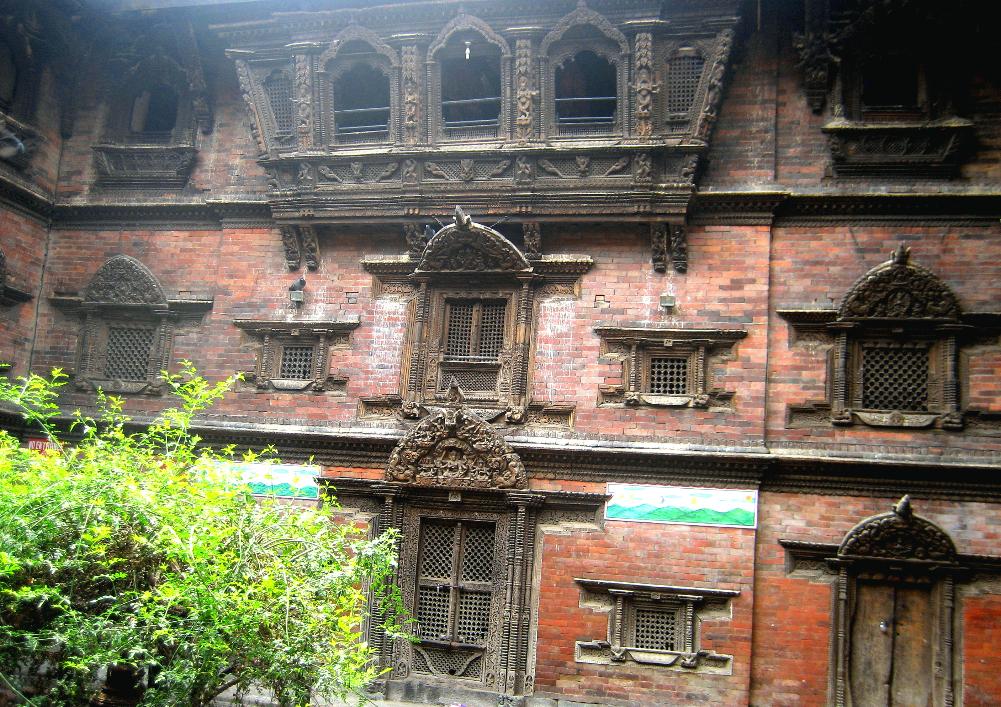
Where We Be
| The Beatles hung out right here at Maju Deval temple during their visit to Nepal. Many still call it the Hippie Temple. |
| Our guide explained that people who do bad things in life sometimes come back as pigeons. Apparently there were a lot of naughty people out there! |
| The sheer density of temples in this compact royal square makes it memorable |
| You can collect good karma by feeding the pigeons in the here and now |
| The white neoclassical building in the background was built in 1908 after the Nepalese Prime Minister visited Europe. It's quite the contrast to the more traditional temple architecture of Durbar Square. |
| This man makes and sells the ultimate "green" (environmentally friendly) baskets out of leaves |
| The man-bird Garuda, Vishnu's mount, kneels in prayer |
| Musicians make offerings to this four-armed music-loving god |
| This little rat is the unlikely "vehicle" (i.e., form of transport) for the elephant-god Ganesh |
| A local gets a kick out of one of the mask wearers |
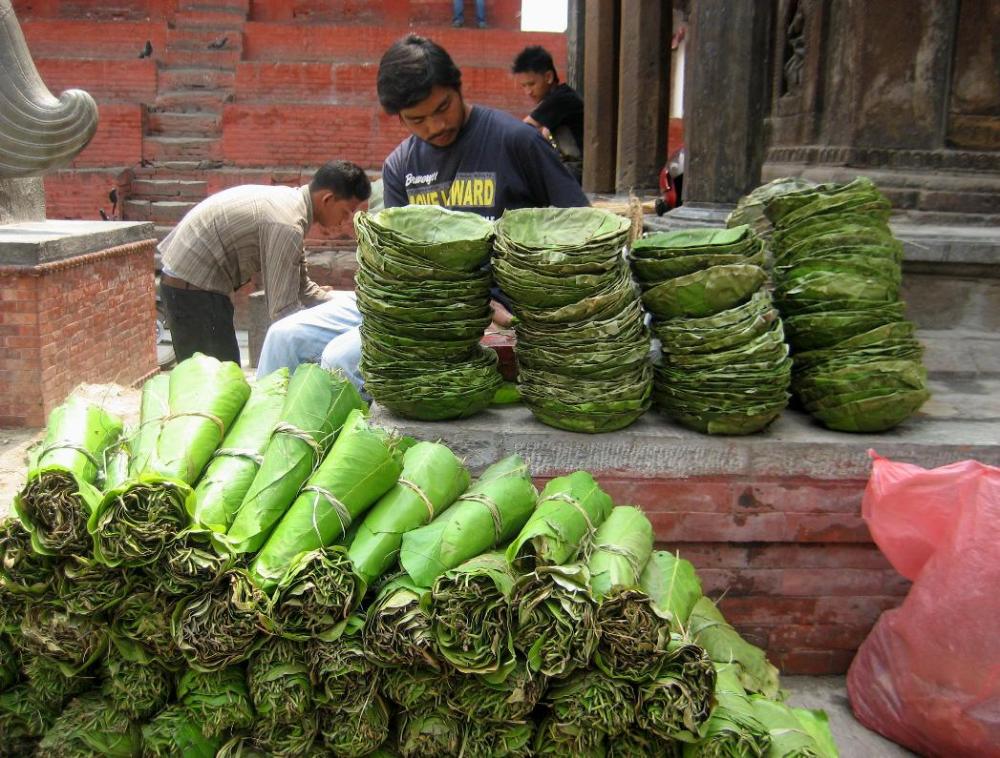
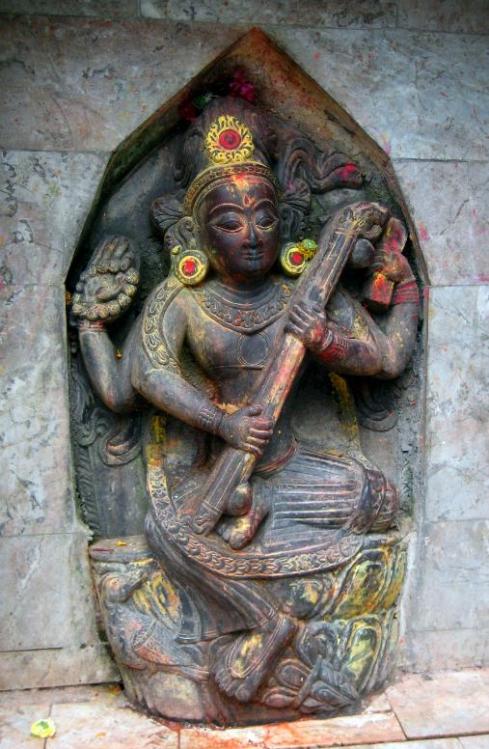
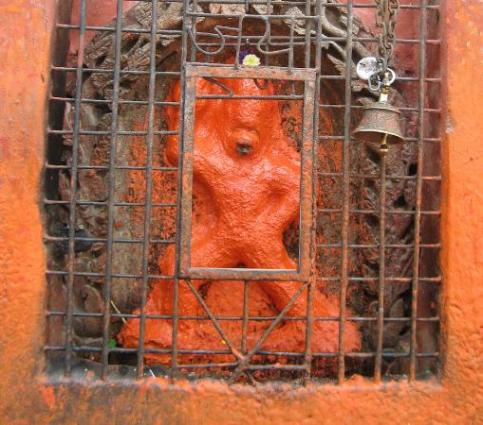
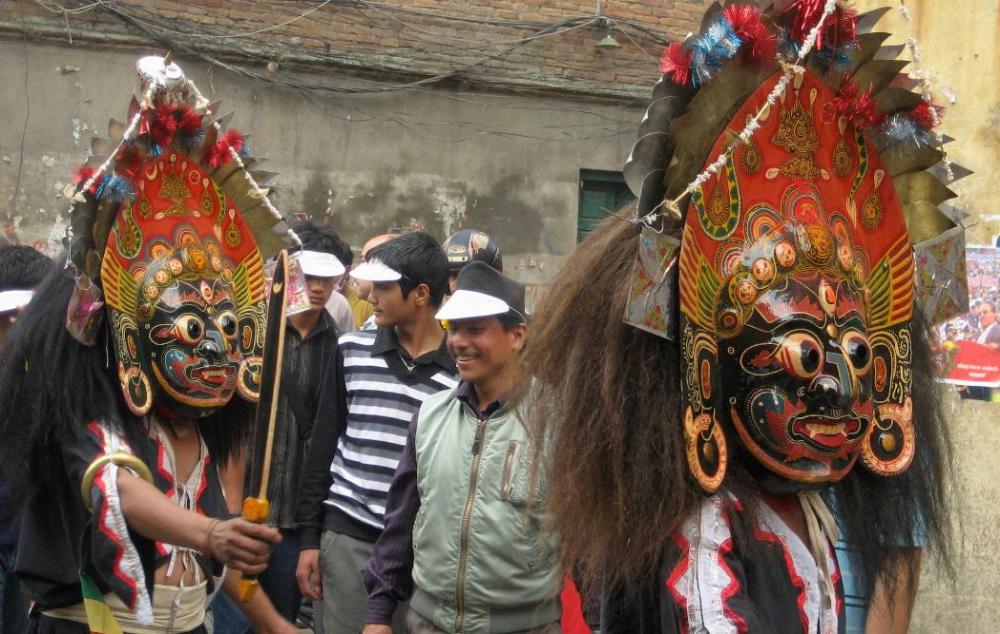
| We lucked out and got to see the Kumari Devi (Living Goddess). She briefly appeared at the middle window (top balcony) of her palace. Our impression was of a four-year-old with a lot of attitude, self-possessed and more than a little bored with having to be dressed up and on display at intervals throughout the day. Who could blame her? We said "Namaste" as instructed but she, being a goddess, didn't deign to respond. No photos were permitted when she was on the balcony. |
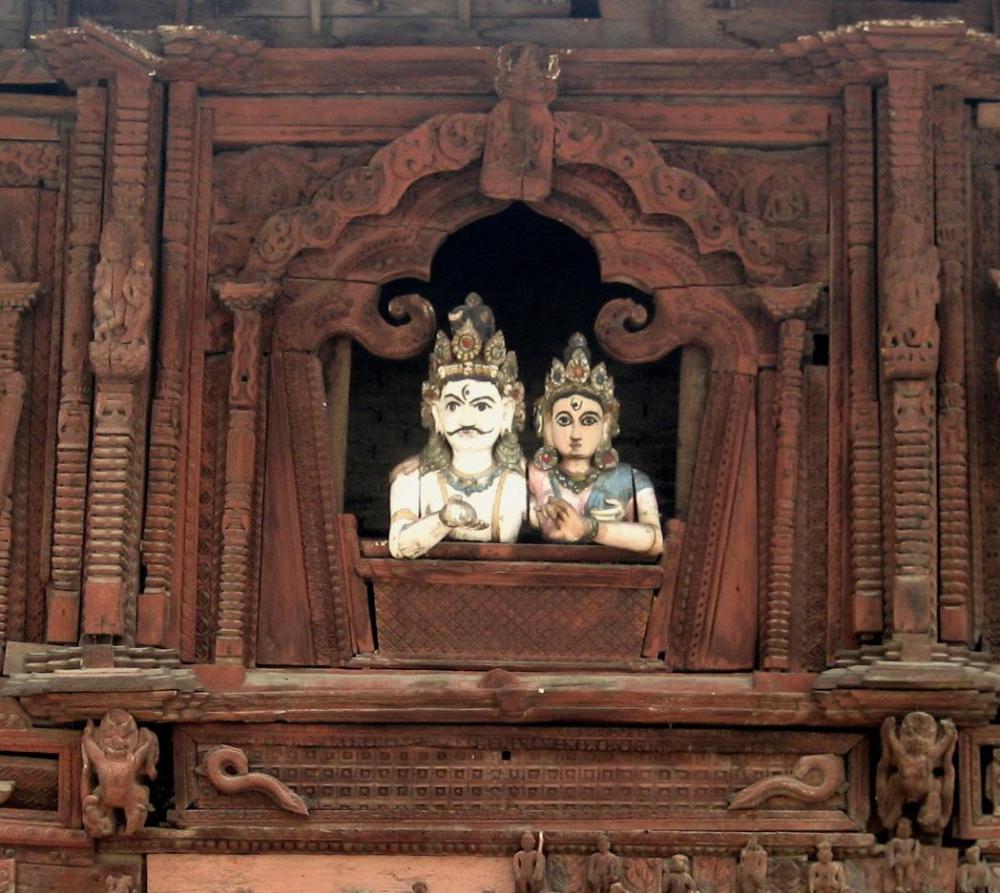
| We liked this carved wooden insert in the brick wall |
| This stone inscription (1664) written by a Nepali king in 15 languages includes one word in English, the word “Winter”. A legend says milk will flow from a spout in the middle of the stone if someone is able to decipher all 15 languages. |
| This tiny Hanuman monkey statue is nearly hidden beneath layers of orange vermillion paste applied by generations of devotees |
| This Hanuman statue has been honored so often his face is completely hidden beneath a coating of orange paste! |
| This is the Shiva-Parvati Temple. See the next picture for a zoom-in of Shiva and his consort at the balcony window. |
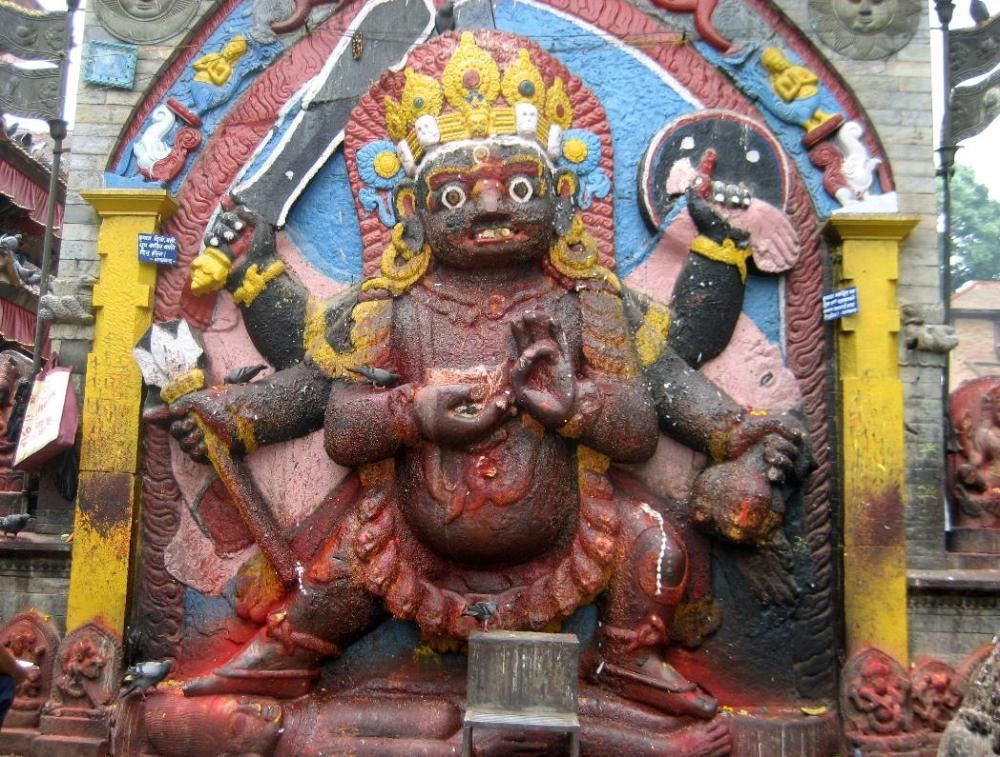
| Shiva and Parvati survey their domain from a high balcony at the center of Durbar Square |
| It's said that telling a lie in front of this statue of Bhairab, god of justice, could result in instant death |
| A long line of buckets and containers wait to be filled with water by locals at Durbar Square |
| Durbar Square -- Kathmandu, Nepal |
There are three Durbar Squares in Nepal.
"Durbar" means "royal," and back in the day --
the late 1400s to mid 1700s to be more exact --
three kingdoms in Kathmandu Valley competed
to build the most impressive monuments to
their power: Kathmandu, Patan, and Bhaktapur.
The result was a building boom of temple and
palace architecture and a flourishing of the
arts. Since the three city-states are located less
than an hour away from one another by taxi, it's
a cinch to see all three in the same trip.
At Kathmandu's Durbar Square, we not only got
to see great temple architecture but also a
living goddess! She was all of four years old.
Called the “kumari devi,” she is a young Nepali
girl chosen according to a list of 32 strict
requirements. For example, she must be from a
particular caste of gold- and silversmiths, her
voice must sound a certain way, her horoscope
must be just so, and she must not flinch at a
display of gruesome buffalo heads but rather
remain calm and collected throughout the
ordeal (since a god wouldn't flinch at such a
display). As a final test, she must choose items
of clothing worn by her predecessor. Once
chosen, she is the kumari until her first period,
when she is dethroned and another is chosen.
"Durbar" means "royal," and back in the day --
the late 1400s to mid 1700s to be more exact --
three kingdoms in Kathmandu Valley competed
to build the most impressive monuments to
their power: Kathmandu, Patan, and Bhaktapur.
The result was a building boom of temple and
palace architecture and a flourishing of the
arts. Since the three city-states are located less
than an hour away from one another by taxi, it's
a cinch to see all three in the same trip.
At Kathmandu's Durbar Square, we not only got
to see great temple architecture but also a
living goddess! She was all of four years old.
Called the “kumari devi,” she is a young Nepali
girl chosen according to a list of 32 strict
requirements. For example, she must be from a
particular caste of gold- and silversmiths, her
voice must sound a certain way, her horoscope
must be just so, and she must not flinch at a
display of gruesome buffalo heads but rather
remain calm and collected throughout the
ordeal (since a god wouldn't flinch at such a
display). As a final test, she must choose items
of clothing worn by her predecessor. Once
chosen, she is the kumari until her first period,
when she is dethroned and another is chosen.
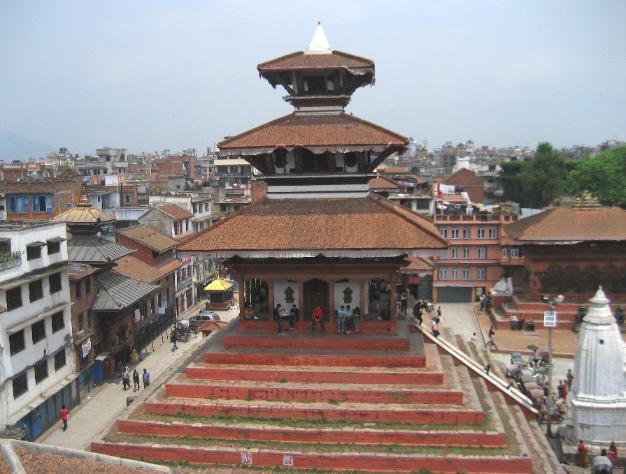
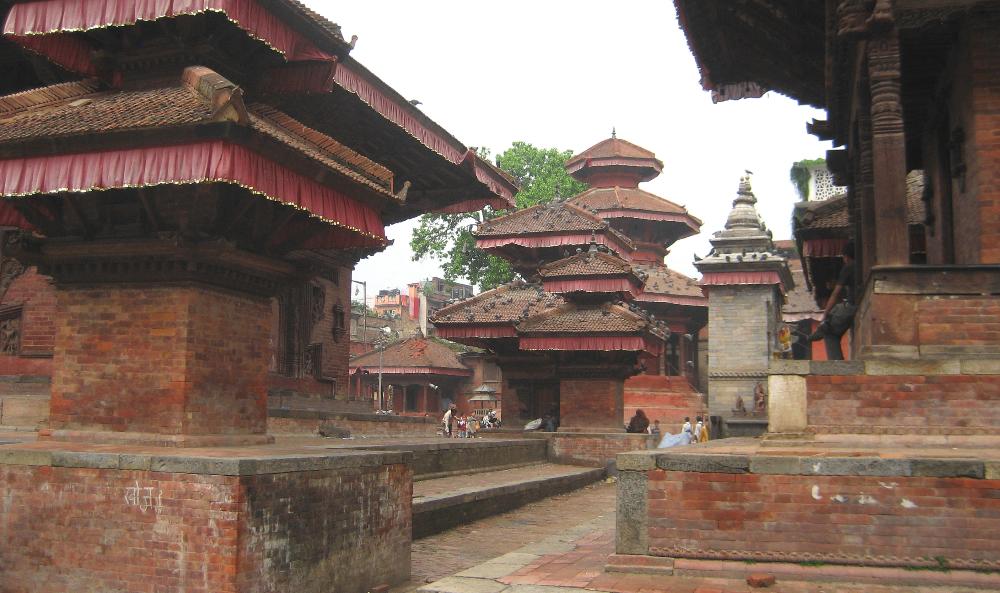
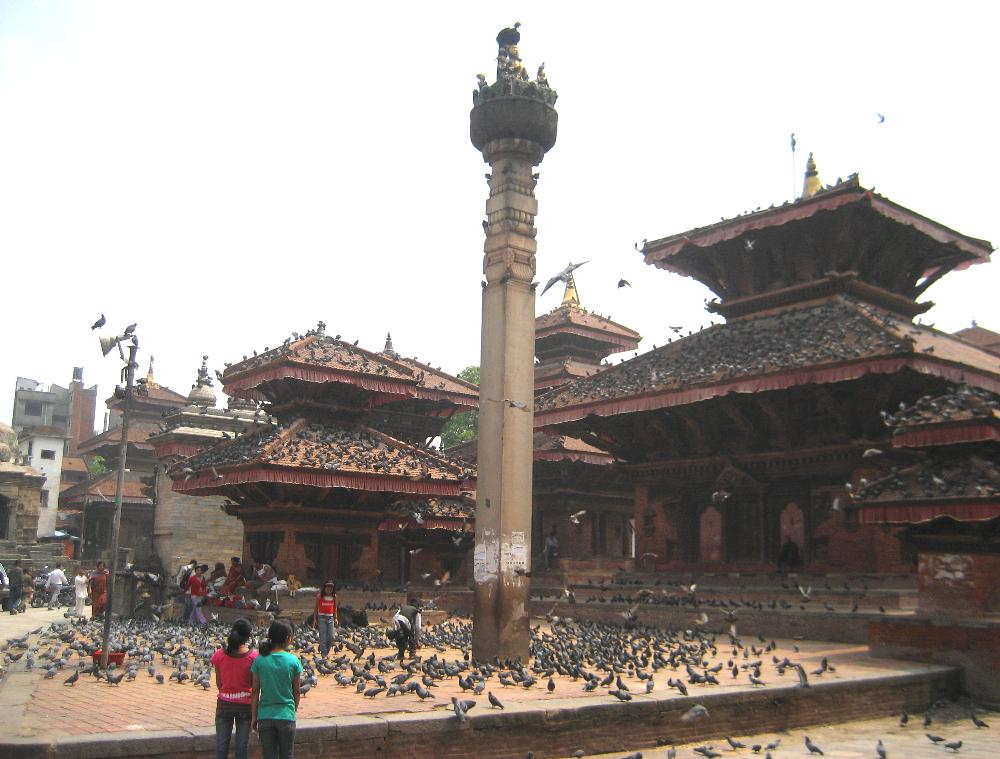
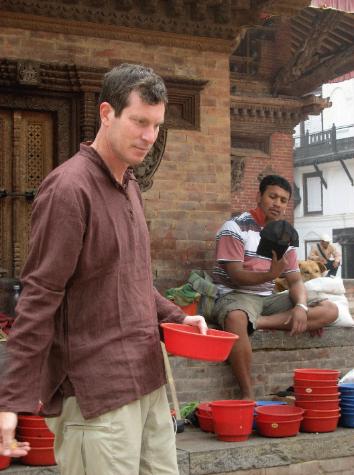
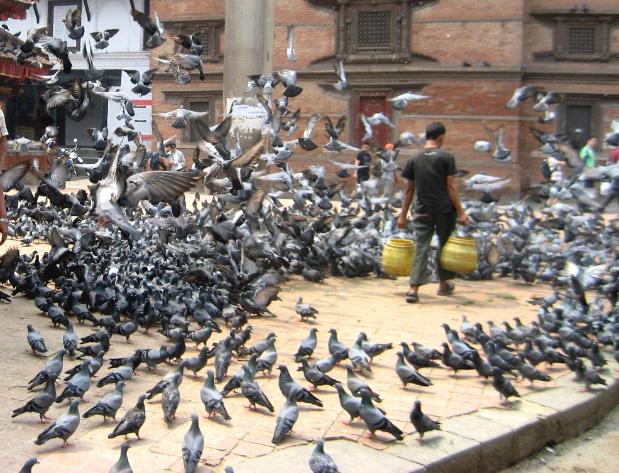
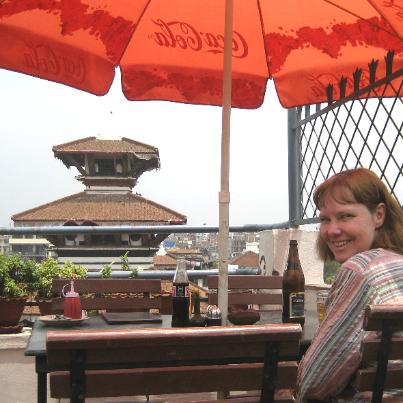
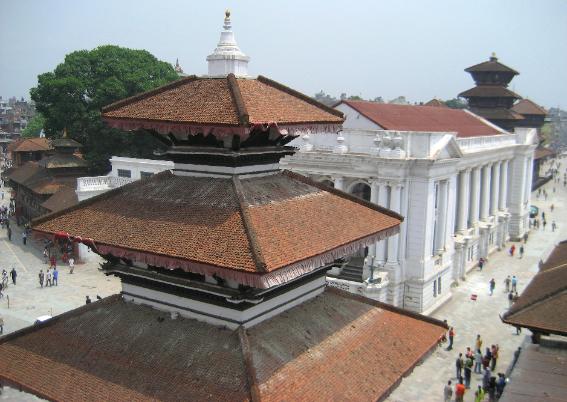
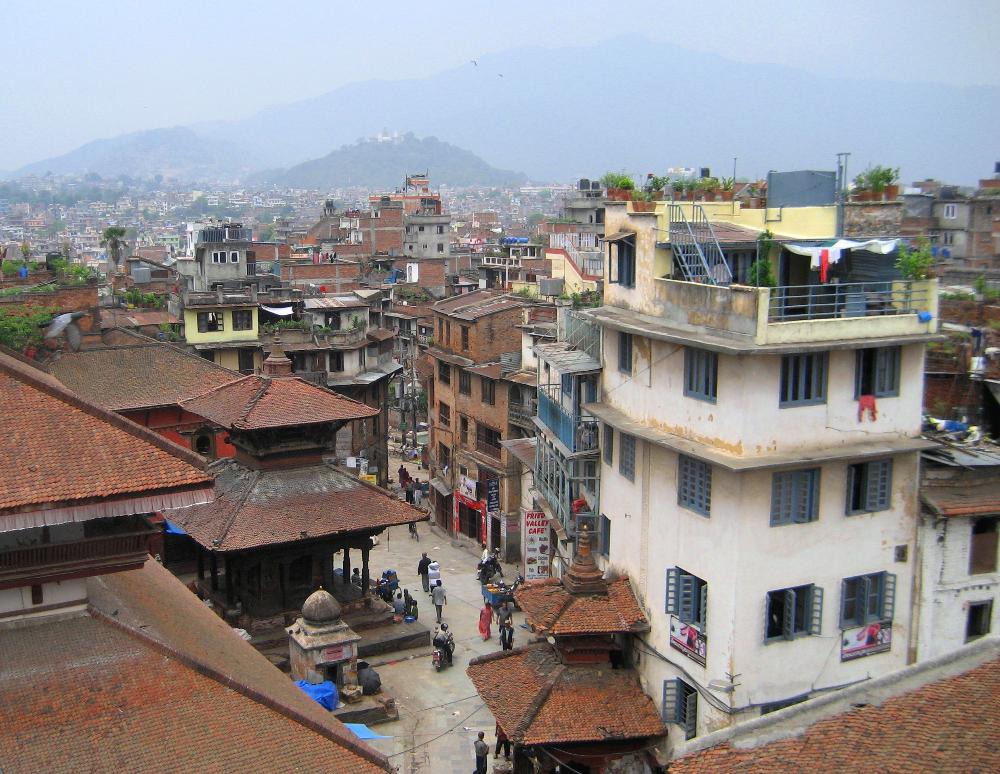
| The sprawling city of Kathmandu presses right up against the temples of Durbar Square at its center |
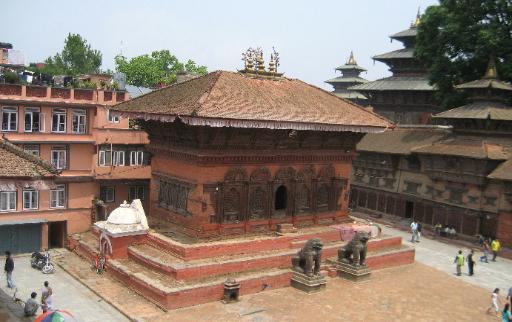
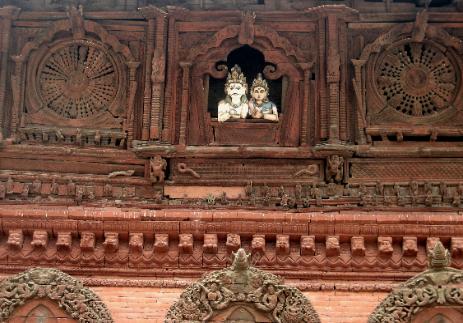
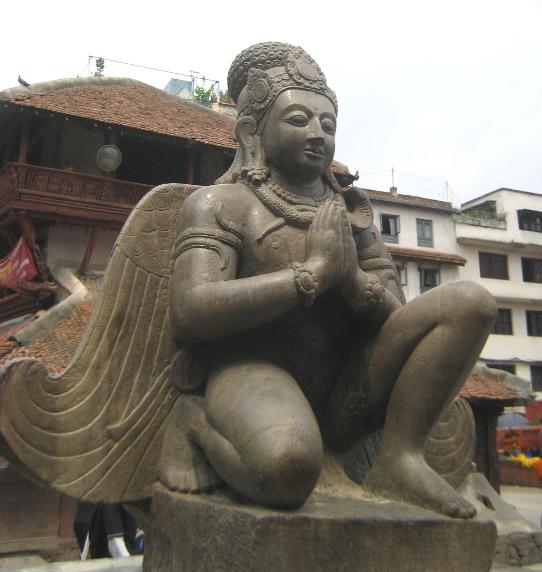
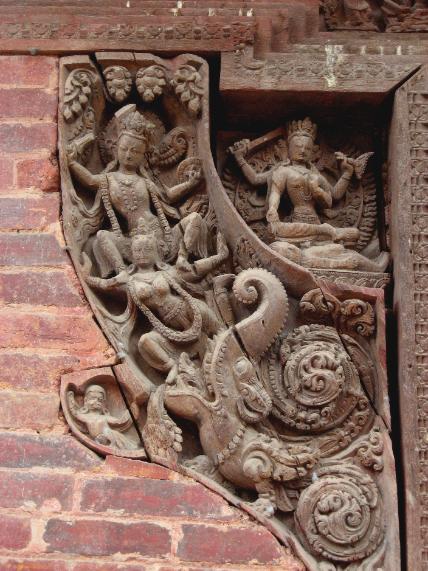
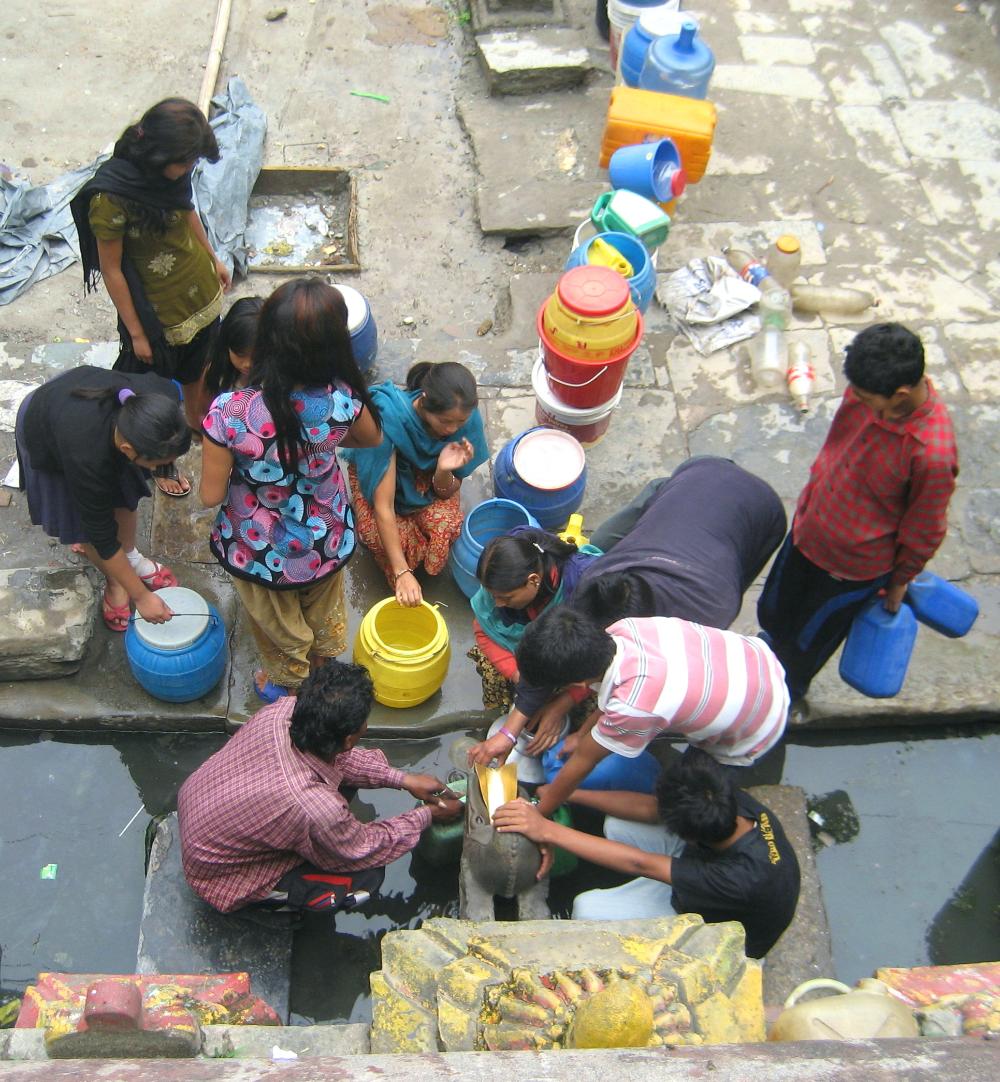
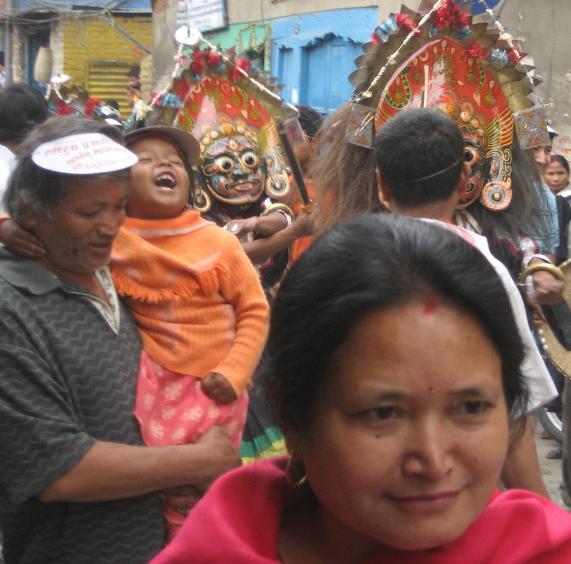
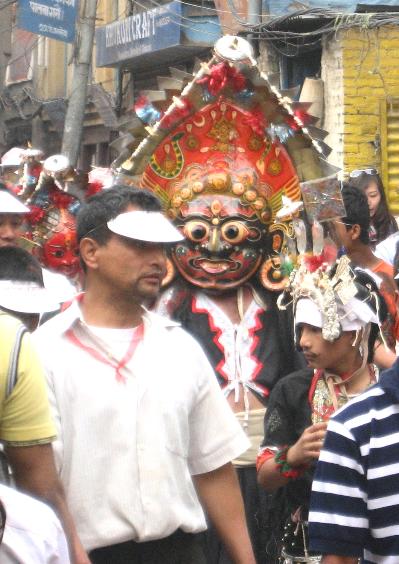
| We happened upon a festival parade near Durbar Square |
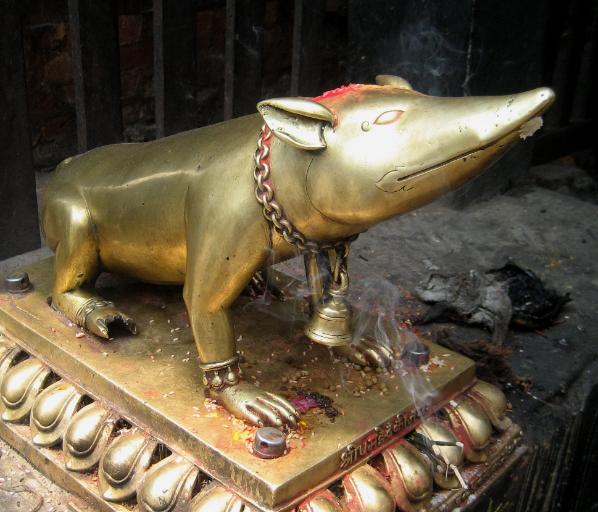
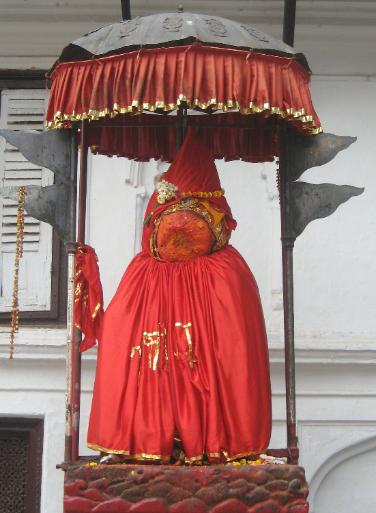
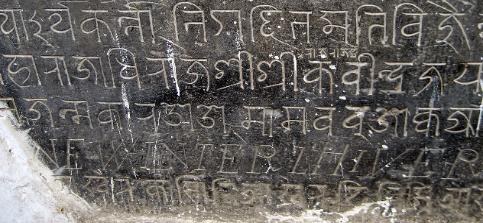
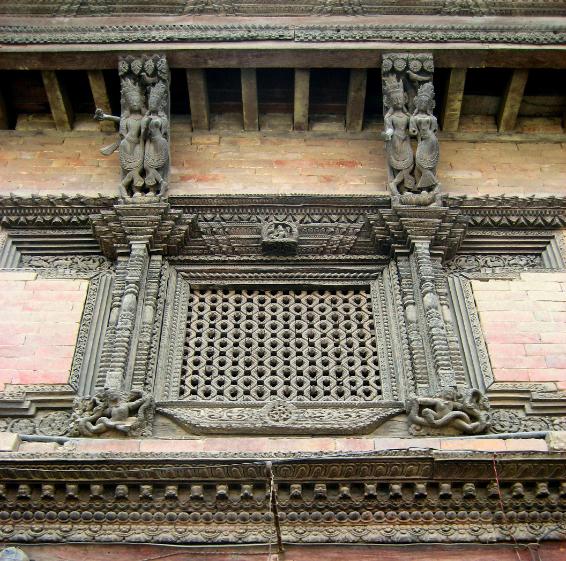
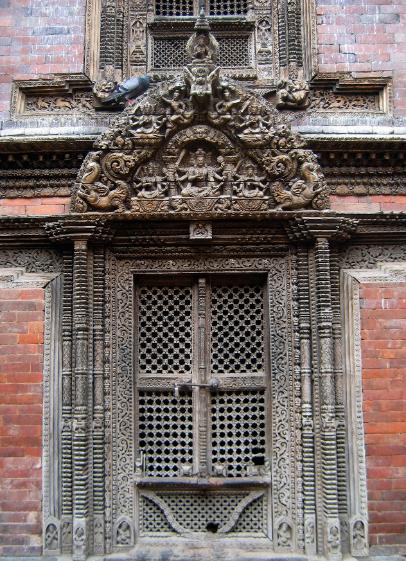
| The doors and windows of the Kumari Devi's palace are incredibly ornate |
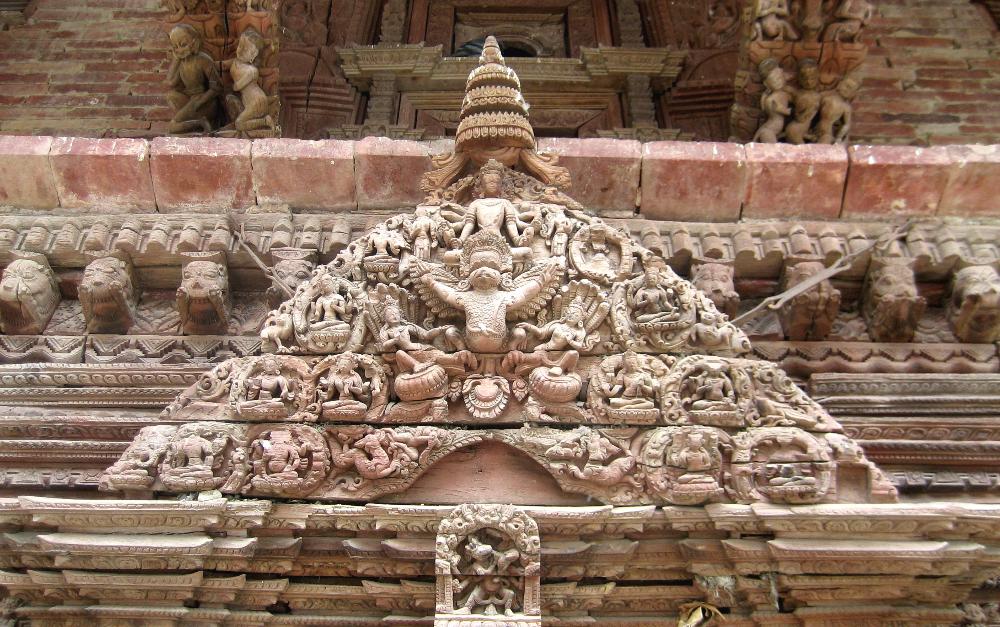
| There are plenty of fine artistic details to appreciate here |
